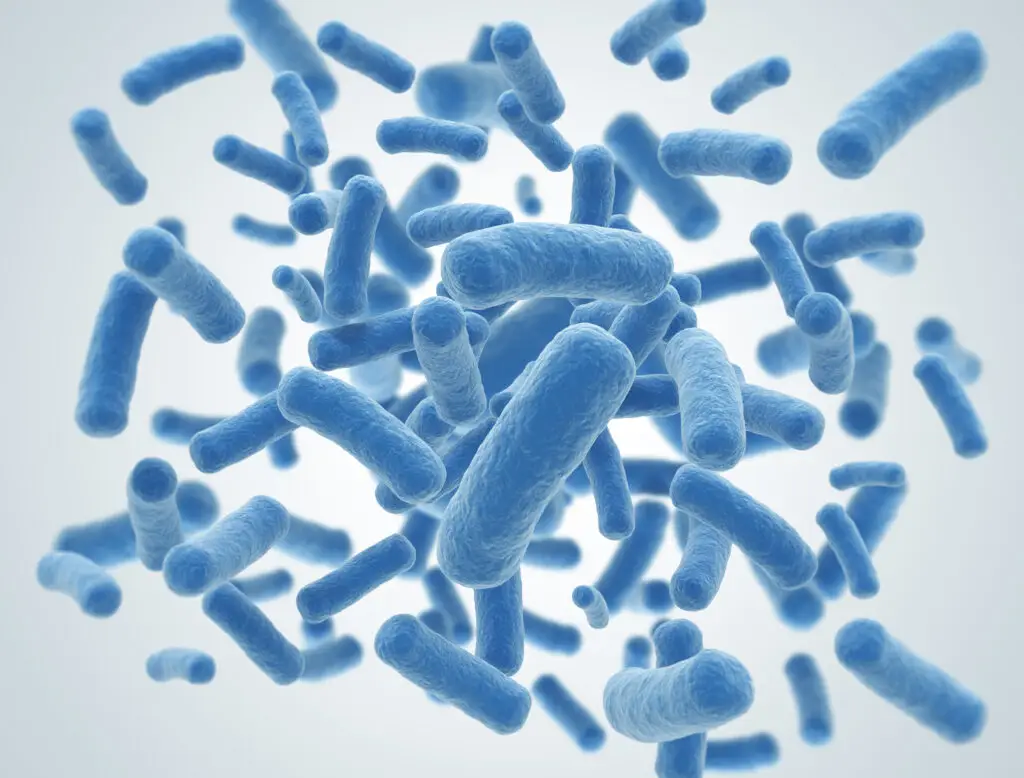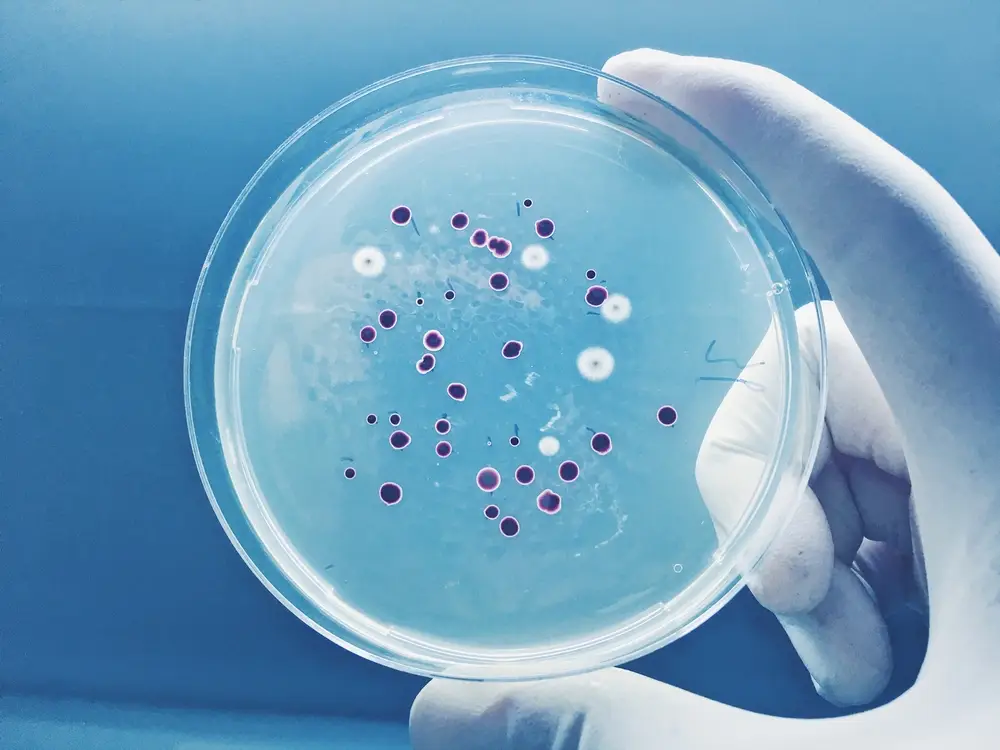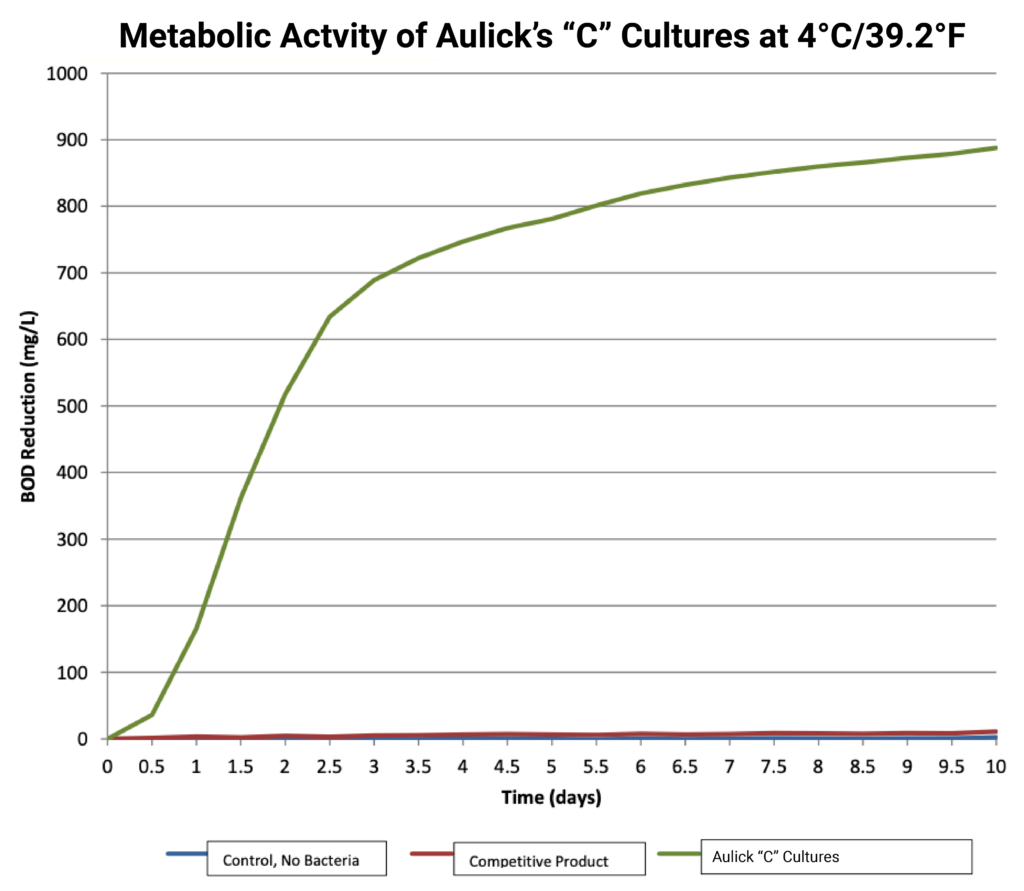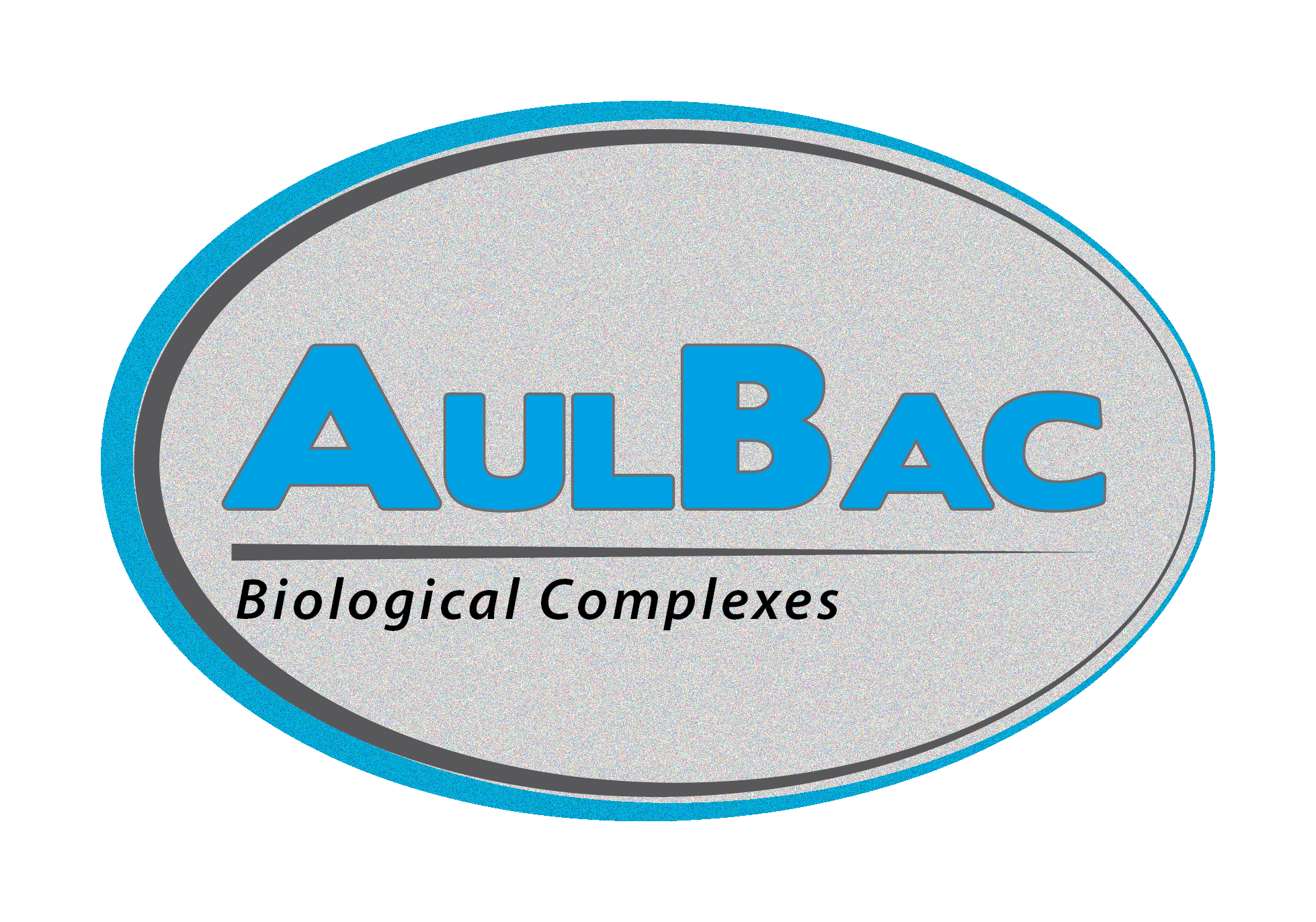
Accepted Norms:
- Most aerobic wastewater treatment plants operate in the Mesophilic bacteria temperature range (50 to 105°F; 10 to 40.6°C) and best at 86°F (30°C).
- At a wastewater temperature of 60°F (15.6°C), the bacterial activity rate is reduced to ½ of optimum.
- The primary option a WWTP operator has to maintain performance at cold wastewater temperatures is to increase and maintain higher MLSS (Mixed Liquor Suspended Solids) levels. Basically keeping slower, less efficient workers, but more of them and perhaps hoping they may acclimate. Aeration Stabilization Basin (ASB) systems are extremely limited in the options they have to minimize negative seasonal disorders.

A Bioaugmentation Point of View
Microbes in biological wastewater treatment systems are single-minded at growing and surviving using the contaminant found in the wastewater as “food”. The growth rate of the microbes affects the rate at which the chemicals are removed from the wastewater. The concentration of chemicals or “food” that the microbes are exposed to in the wastewater treatment system affects the growth rate. As the wastewater temperature increases or decreases beyond the optimal growth temperature range, microbes become less sensitive to the presence of the chemicals (“food”) and the net result is that the microbial growth rate decreases and the rate of biodegradation (COD/BOD removal) decreases.
Bacteria that operate at lower temperatures than the Mesophilic are termed Psychrophilic and can work in the 32°- 70°F (0° – 20°C) range. The literature varies on the operational temperature ranges for all classifications of bacteria, however, the following information is accurate for the purpose of the discussion.
Water temperature has several major impacts on any given bacterial population. The following three are considered important:
- The rate of diffusion of organic substrates (food) into the bacterial cell
- The activity rate of the enzymes the bacteria produce
- The production rate of new bacterial cells
One of the specific characteristics of Psychrophilic bacteria is the high concentration of unsaturated fatty acids within their cell membrane. These fatty acids allow the membrane to remain more fluid and permeable at low water temperatures. Due to this feature, the efficiencies of the reactions listed above are enhanced in Psychrophilic bacteria versus a more Mesophilic dominant population during low wastewater temperature periods.

The Right Microbes At The Right Time
At Aulick, we produce microbial blends that possess a lower sensitivity to extreme wastewater temperatures versus indigenous bacteria along with an ability to metabolize specific organic constituents, and apply these microbial blends to wastewater treatment systems.
It allows us to increase the rate of microbial growth under both high and low temperature periods, which in turn improves the wastewater treatment system performance under temperature stressed conditions. For low wastewater temperature applications, we provide a series of microbial blends that include patent-pending strains of Psychrophilic bacteria. These microbial strains are incorporated into several of our industry specific dry powder product formulations. These products are denoted by a “C” after the product number as seen on our technical data sheets.
Cold wastewater tolerant bacteria are real and distinctly different. That difference is in our product selection and that advantage translates into better plant performance.

Applications And Benefits
- Aeration stabilization basins (ASB’s)
- Activated sludge basins/lagoons, tanks
- Aerobic and anoxic digesters
- Facultative lagoons
- Increase biomass activity during low wastewater temperature periods
- Enhance COD, TOC, BOD and TSS removal
- Rapid upset recovery
- Enhance biosolids settling/secondary clarifier settling

Solution Spotlight: AulBac 400C

AulBac 400C is a powdered blend of naturally occurring, non-altered, patented psychrophilic microorganisms (cold water adapted) and growth stimulants formulated to efficiently degrade carbohydrates, proteins and fats, oils and grease (F.O.G.).
The bacteria in AulBac 400C produce multiple types of enzymes such as Protease, Amylase, Esterase, Urease, Cellulase, Xylanase, and Lipase to break down waste products associated with meat processing, dairies, brewing and distilling operations, vegetable & fruit processing and carbohydrate processing facilities.
AulBac 400C contains aerobic as well as facultative bacteria to work in anoxic conditions. Use of AulBac 400C will increase biological activity, improve biomass flocculation and enhance nitrogen and phosphorous removal at wastewater temperatures below 59°F.


